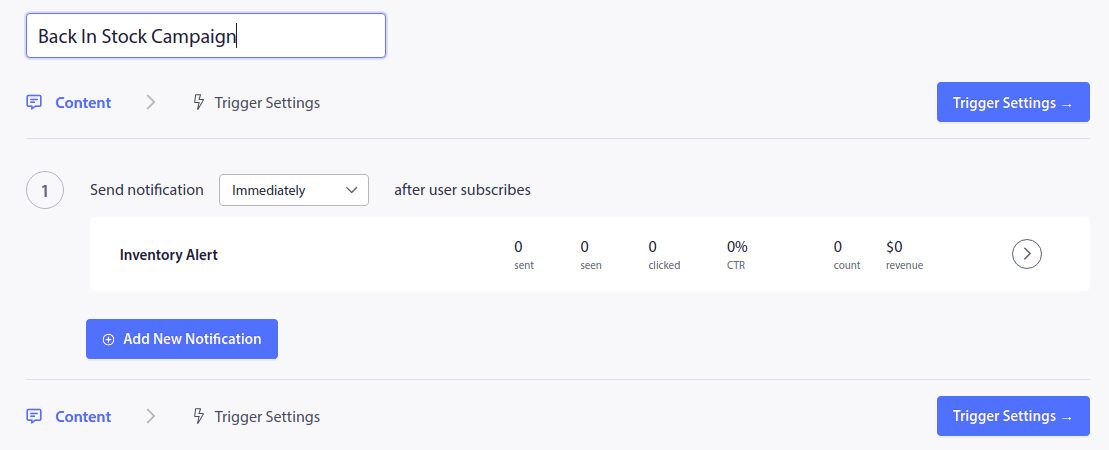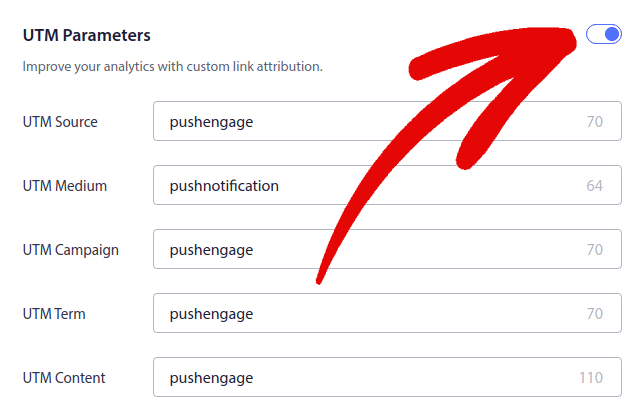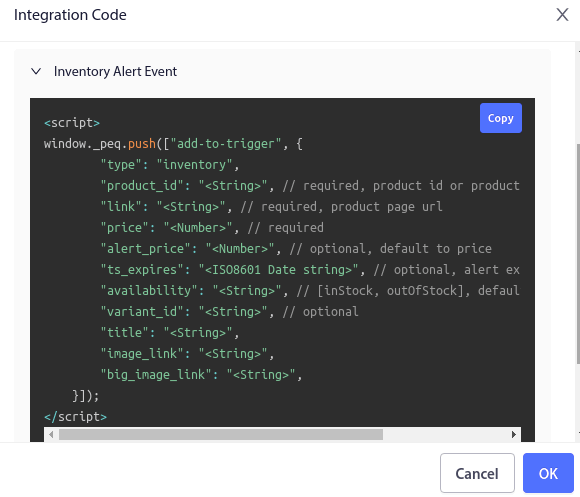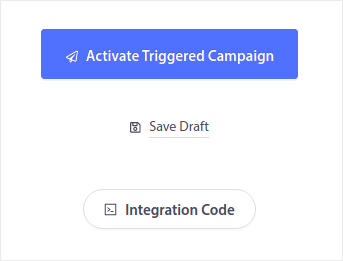Looking for an easy way to send back-in-stock notifications for your eCommerce site?
Let’s say that a website visitor loved your product and tried to buy it, but the store was out of stock. As soon as you restock your supplies, you need to send out a notification to that website visitor. This is known as a back-in-stock alert or an inventory alert.
Why? Simple: It’s an easy sell. That visitor already loved your product and tried to buy it. So, you know that they’re definitely interested. A simple push notification can generate a ton of extra sales and drive more revenue to your business on autopilot.
It’s super easy to set up back-in-stock notifications on any website. But it can be pretty confusing if you’re doing it for the first time.
This article is going to help you set up back-in-stock notifications in less than ten minutes.
Sounds good?
Let’s dive right in!
How to Create Back-in-Stock Notifications Using PushEngage
Before we dive right into creating back-in-stock notifications, you need to know something. Inventory alerts are pretty advanced. You can still create the campaign yourself, but you may need a developer to install it for you. Or, you can use Google Tag Manager to fire the code snippet if you’re familiar with it.
We’re going to use PushEngage to set up back-in-stock notifications for your site. PushEngage is the best push notification service in the world.
How to Create a Basic Inventory Alert Web Push Campaign
Let’s start things off with a basic back-in-stock push notification campaign using PushEngage. There are a few advanced features that we’ll look at later on. For now, let’s understand the basics of how an inventory alert works.
Step #1: Create a New In Stock Alert
Head over to your PushEngage dashboard and go to Campaign » Triggered Campaigns and click on Create New Triggered Campaign:

Then, select the template for Back In Stock Alerts and click on Create New:

And you should see a new screen to create your campaign that looks like this:

Step #2: Draft Your Notifications
Next, to create your first notification, click on the arrow mark next to the notification:

Then, edit your push notification copy under Notification Look and Design:

As you can see, there are a bunch of custom tags such as {{title}} and {{link}} in the push notifications. These tags are called attributes. We talk about PushEngage attributes in more detail in our article on how to send personalized push notifications with attributes.
In simple terms, attributes help you automatically personalize your back-in-stock alerts. They are meant to dynamically fetch your customer’s saved personal details and product details such as the product image, product name, and product URL.
This way, you can send custom push notifications very easily. We’ll talk about setting up the attributes in more detail soon. First, let’s finish up your first notification by adding call to action buttons:

With PushEngage, it’s super easy to create multiple call-to-action (CTA) buttons with different URLs. All you have to do is enable the second push notification CTA by checking Show Second Button.
You can also set a custom Notification Duration:

Setting a notification duration allows you to terminate notifications when an offer expires. If you don’t set an expiration date to your notifications, they just keep stacking up in your subscriber’s notification center until they see it. At first glance, this can look super spammy and that’s a great way to lose a lot of subscribers very quickly.
When you’re done, click on Trigger Settings and set Trigger Limits for your campaign:

Trigger limits make sure that you don’t spam your subscribers. If you set a daily limit of 2, your subscribers will get two push notifications from you in a day at most in a day.
You can also set up UTM parameters to track push notifications more effectively:

Step #3: Copy the Back-In-Stock Notifications Integration Code
You’re mostly done.
Now, you’ll need to copy the generated code snippet. Click on the ‘Integration Code’ button at the bottom right corner.
Then, just copy the code:

And edit it as required.
You will need to pass the variables from your end for the following as mentioned on your website:
- Product ID: This is your product’s unique identity such as the SKU.
- Link/URL: You’ll need to use the product URL as listed on your website.
- Price: This is the current product price (inclusive of all discounts).
- Title: The title is essentially the name of the product.
- Image Link: You’ll need to send the URL for any image you want to display as the brand’s identity. It’s typically the logo or favicon for your website.
- Alert Price (Optional): The alert price is the reduced price that will trigger your back-in-stock notifications.
- ts_expires/ Alert Expiry Date (In ISO Format): You can also set an expiry date for your notifications. This value is set to 28 days by default.
- Availability: This is an optional property and takes “Out Of Stock” as default value in Inventory Alert.
- Variant ID: Again, this is optional. But you can set the exact variant ID in case there are multiple variants to the same product.
- Big Image Link: You’ll need to send the URL for any image you want to display as the product image.
NOTE: You can leave the option to leave a field unchanged because they all have default values. But you’ll need to replace the values for the required fields. For instance, you will need to replace the <String> field for the link property in this code with the actual product URL. The same goes for other fields such as price and product_id.
Step #4: Add the Integration Code to Your Site
Now that you understand the integration code, it’s time to add the integration code to your website. Mostly, you’ll have a button on your site that says ‘Notify Me When It’s Back In Stock’. When your subscribers click on a button like that, they get subscribed for automated inventory alerts.

So, you’d want to fire that code snippet when someone clicks on your click to subscriber button.
Step #5: Activate Triggered Campaign
Now, all you have to do is hit the ‘Activate Triggered Campaign’ button:

And you’re done! Your site will now send out automated back-in-stock notifications.
What’s Next?
One of the biggest problems with marketing campaigns is how confusing it can be to automate the process. There’s usually a huge learning curve and you’ll probably give up halfway through setting it up.
Thankfully, push notifications are not that complicated to set up. And you can always check out this article on automated campaigns that actually work for inspiration. Or, you can get started with other eCommerce push notifications such as:
We recommend that you use PushEngage to start your journey into push notifications. PushEngage is the #1 push notifications software in the market and it’s really easy to create powerful automated notifications using PushEngage.
So, if you haven’t already, get started with PushEngage today.
